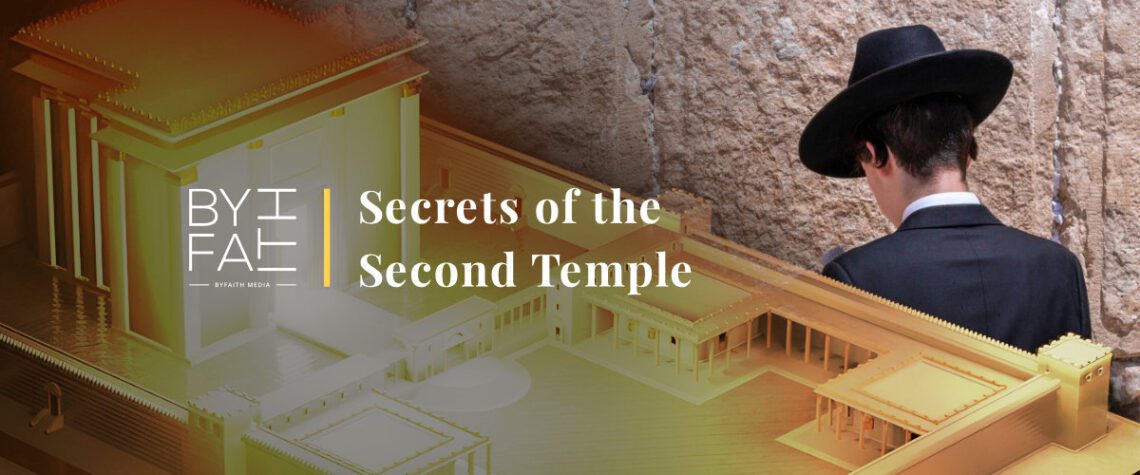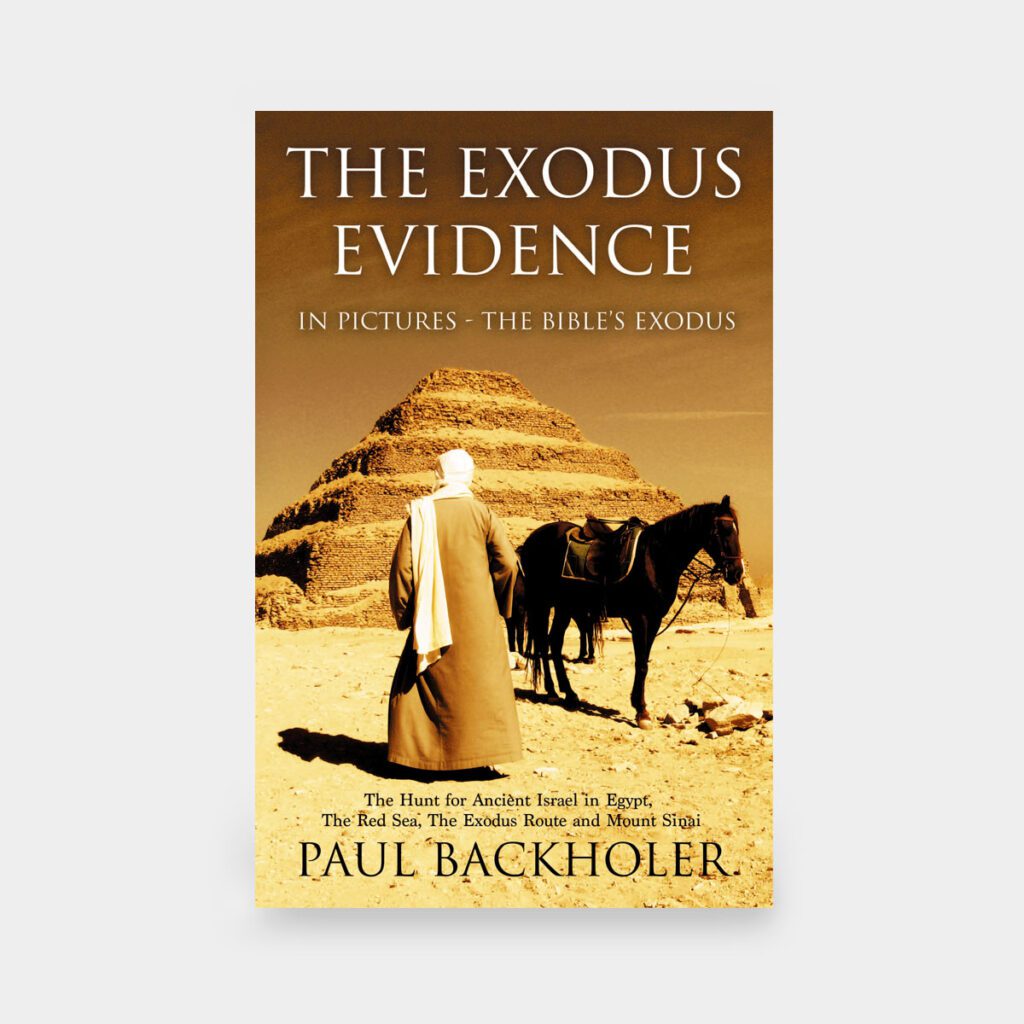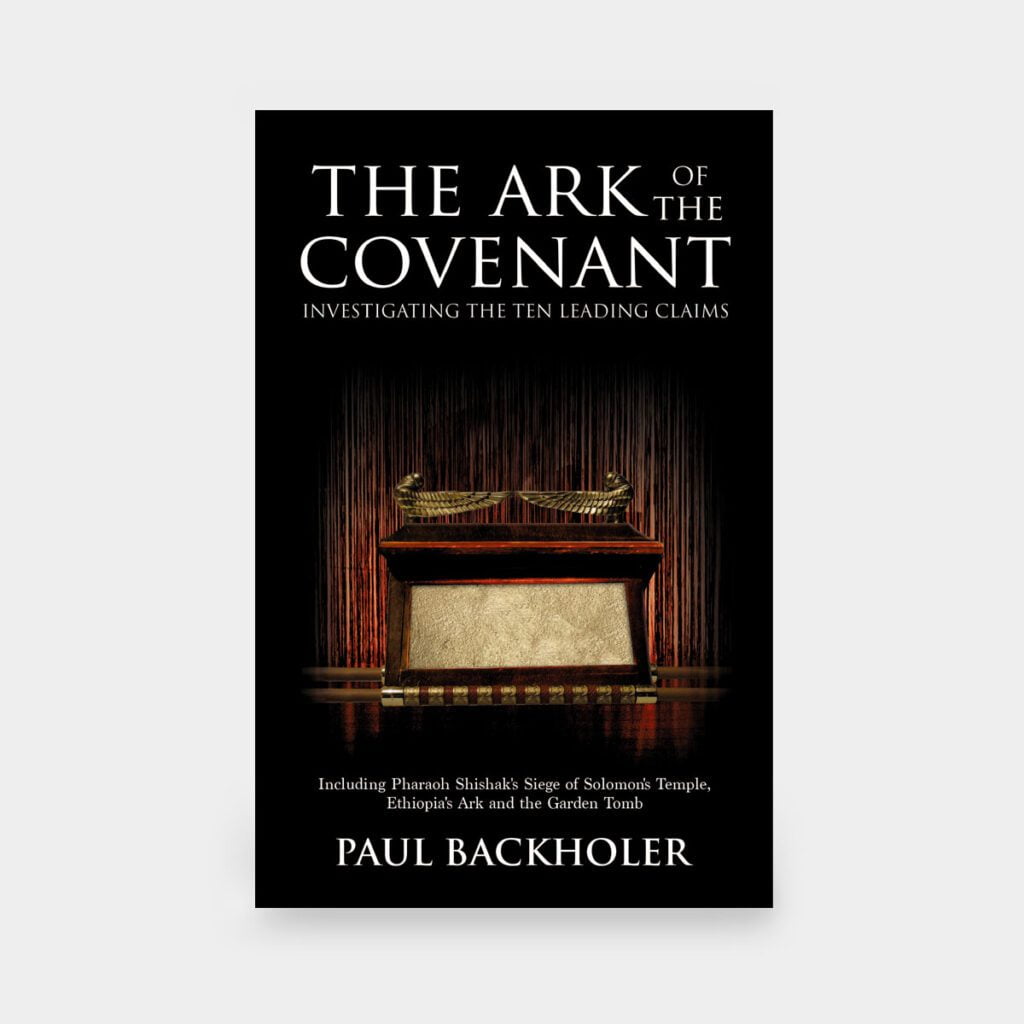
Second Jewish Temple Secrets in Jerusalem, Israel
Uncover the secrets of the Second Jewish Temple and delve into its fascinating story. Discover the evidence for Herod’s Temple in Jerusalem, as you step back in time and explore the magnificent treasures of its legacy, a testament to faith and resilience.
Jesus was walking on Solomon’s porch in the Temple courtyard
– John 10:23
Watch part 1 of the third episode of Walk the Bible and discover twenty shocking items to unveil the great Jewish Temple in Jerusalem, that Jesus and His disciples walked in.
Walk the Bible, Episode 3
Second Jewish Temple Secrets Documentary

Jesus replied, “I can guarantee that if they are quiet, the stones will cry out”
– Luke 19:40
1. The Second Temple Treasures, Titus’ Arch
When the Romans destroyed the Jewish Temple in AD 70, they stole the Jewish Temple treasures and took them to Rome. The Spoils of Jerusalem Panel from the Arch of Titus in Rome, contains direct proof of the existence of the Temple treasures from the golden menorah, to the showbread table, to the trumpets and lampstand.
Vespasian resolved to build a temple to peace…he also laid up therein, as ensigns of his glory, those golden vessels and instruments that were taken out of the Jewish Temple
– The Wars of the Jews, 7.158-1610
These treasures made their way to Carthage (in Tunisia), but were last seen in public in Constantinople (in Turkey) in the 6th century, when they were paraded where the Hippodrome once stood and Byzantine records say they were returned to Jerusalem because of fear of God’s wrath.
And there was also silver weighing many thousands of talents and all the royal treasure amounting to an exceedingly great sum… and among these were the treasures of the Jews, which Titus, the son of Vespasian, together with certain others, had brought to Rome after the capture of Jerusalem
– Procopius
After returning to Jerusalem, the Second Temple treasures were either seized by Persian or Muslim conquests to be melted down, or as some claim, they are still held in the Vatican vaults set to be revealed at a future prophetic date.
It was an exceedingly great amount, among the items taken were the treasures of the Jews, carrying off the Temple menorah to their capital city of Carthage
– Procopius
In 2004, the Israel Antiquities Authority was given permission to search the vaults of the Vatican, but uncovered no evidence of their whereabouts, however, others claimed to have identified them in a classified room that remains sealed.
2. Trumpeting Place Inscription
Buried for 1,900 years, the Trumpet Place Inscription was rediscovered in 1968 by archaeologist Professor Benjamin Mazar. In the first century the Jewish historian, Josephus in his book The Jewish War, describes the ‘custom for one of the priests to stand and to give notice, by sound of trumpet,’ at the beginning and end of the Sabbath. But no evidence had ever been uncovered for his testimony about this aspect of Temple life until this inscription was discovered.
This Second Jewish Temple inscription proclaims, ‘To the place of trumpeting,’ which provides archaeological evidence that acquiesce with ancient Jewish descriptions of the workings of the Temple in the time of Jesus. This ancient Hebrew lettering was found where it fell 1,900 hundred years ago and furnishes us with qualified proof that a Jewish Temple stood in this location.
The point where it was custom for one of the priests to stand and to give notice, by sound of trumpet, in the afternoon of the approach, and on the following evening of the close, of every seventh day
– The Jewish War (IV, IX, 12), Josephus.
3. The Temple Warning Inscription
Shocking evidence exists for an experience the Apostle Paul had in Jerusalem. In the Book of Acts, St. Paul is accused of defiling the Jewish Temple in Jerusalem by bringing Greeks into it and a riot begins. But did the Jews really care about Gentiles coming into their Temple and where is the evidence? In 1871, an archaeologist rediscovered an ancient Jewish warning from Herod’s Temple saying:
No stranger is to enter within the balustrade round the Temple and enclosure. Whoever is caught will be himself responsible for his ensuing death
– Ancient Jewish Temple Warning
This inscription confirms ancient writings from the Bible, the Middot and from the historian Josephus who describes it. It is also believed that St. Paul was referencing this inscription when he wrote to the Ephesians.
For He Himself (Christ) is our peace, who has made the two groups one and has destroyed the barrier, the dividing wall of hostility
– Ephesians 2:14
This is another irrefutable proof that the Temple stood on the Temple Mount in Jerusalem, Israel.
4. The Jewish Temple Floor
For the first time ever, we possess an accurate reconstruction of the flooring from Herod’s Second Jewish Temple in Jerusalem. When an illegal excavation on the Temple Mount in Solomon’s Stables left piles of antiques to be examined, the Temple Mount Sifting Project rescued the apparent ‘junk’ that was thrown away. Amongst the discoveries, they uncovered 100 coloured stone floor tile segments dating from the Herodian Second Temple Period. These geometrically cut polished stones were laid with sacred precision on the Jewish Temple Floor and King Herod’s architects employed this same technique in his palaces too, such as Masada, Jericho and the Herodium.
By reconstructing these tiles with the descriptions provided by the first century historian Josephus, we get to see the Temple flooring that Jesus would have walked on. In his portrayal of the Temple, Josephus describes the its floor as paved with ‘all manner of stones,’ and artifacts from the Temple Mount reveal an eight-pointed star pattern, four squares, a diamond design, and others. Some of these patterns are now called, ‘Herod’s Triangle,’ and they were reconstructed by Frankie Snyder.
5. The Triple Gates
We can walk where Jesus once walked! The sealed Triple Gates by the southern steps at the Temple Mount, Jerusalem, served as the entrance to Herod’s Temple in the time of Jesus and this was a route He would have taken many times with His disciples. Through the gate was a set of stairs leading up to the Temple Mount platform and the Jews would exit the Temple via the hidden double gate stairway nearby.
Inside Solomon’s Stables, on the Temple Mount, which has now been converted into a mosque, there still remains the ancient route to the Jewish Temple, but it’s impossible for them to be studied due to the sensitive nature of the area.
We retain verifiable evidence that these tunnels date back to Jesus’ time, but as the walls of Jerusalem have been demolished many times and then reconstructed following the identical pattern, with ancient stones, we can survey the route the Lord would have taken, but we can’t study them meticulously without conflict.
6. The Secret Temple Tunnels
Did you know mysterious chambers exist under the Temple Mount in Jerusalem, Israel? Underneath the ancient Jewish Temples built by Herod and Solomon, ancient tunnels, cisterns and hidden rooms were established. Despite mapping some of them, very few people have been able to access the secret Jewish Temple tunnels, but archaeologist Dr Ritmeyer is one. In 1974, he entered a tunnel below the Triple Gate underground passageway. The tunnel he entered may have been used to channel water from an ancient unexplored cistern hidden deeper under the Temple Mount. Another covert tunnel was also found below Solomon’s Stables which reached to the Royal Stoa in King Herod’s time.
All these tunnels are now sealed, but countless others remain unexplored under the Temple Mount and in one of these classified chambers, some Rabbis claim they have a map to the undisclosed location of the antechamber containing the Ark of the Covenant, which was buried under Solomon’s Temple when the Babylonians stormed the sacred place in 568 BC.
7. Solomon’s Stables
Mount Moriah is small, therefore to extend the Temple Mount, King Herod used great arches to establish underground vaults to lay a broader platform on. These arches can still be found today, some have been renovated after destruction and others are original.
In Solomon’s Stables, the Crusaders once tied up their horses under the arches built for the Second Temple. Muslims in this area also pay their respect to the legacy of the Jewish Temple, safeguarding an area designated as ‘The Cradle of Jesus,’ where they believe Mary placed the infant Jesus when she came to offer a sacrifice at the Temple to fulfil the Law of Moses. This moment is documented in the Gospel of Luke, when God’s servants in the Temple, Simon and Anna recognised Jesus as the Messiah and the Salvation of God (Exodus 13:12, Leviticus 12:1-8, Luke 2:22–40).
8. Secret Steps from the Lost Double Gates
Have you ever asked what happened to the secret gates Jesus used to enter the Temple? On the Southern Wall of the Temple Mount you can trace the faint outline of an ancient Double Gate to the Jewish Temple that dates back to the time of Jesus, which is partially covered by a Crusader building.
When archaeologists tried to study the area, inside a secret section of the Al-Aqsa Mosque, they exposed the other side of this closed gate, with a set of secret steps leading up to Israel’s Second Temple. This sealed off route contains ornate Corinthian Columns and decorations dating back to King Herod’s time, but it’s almost impossible to visit.
This was a route Jesus and His disciples, and hundreds of thousands of other pilgrims would have taken out of the Temple. The Corinthian Capitals found on top of the columns in this area were also found in the Golden Gate, which means they were probably reused from the original Jewish gates to the Temple.
9. The Lost Gate to the Temple, Barclay’s Gate
A lost Jewish Temple gate has been rediscovered in the Western Wall, in Jerusalem, Israel. In 1852, a Christian missionary, James Barclay discovered an ancient underground structure and doorway on the inside of the Western Wall area. As he explored, he unearthed an ancient and forgotten sealed gate to the Jewish Temple that now bears his name. Excited, he wanted to open the gate, but this was met with fierce opposition.
Today, if you look at the Women’s Sections of the Western Wall, you can see part of the large lintel where the doorway once stood and it continues into the Women’s Prayer Room. On the other side of the sealed gate, a mosque has now been constructed into the ancient Herodian vaulted passage of Barclay’s Gate, to keep it closed forever.
10. Fallen Stones from the Temple
Jesus said to him, “Do you see these large buildings? Not one of these stones will be left on top of another. Each one will be torn down”
– Mark 13:2
Jesus prophesied that every stone on top of the Temple Mount platform would be thrown down and in fulfilment of His prophecy, when the sacred Temple in Jerusalem was destroyed by Rome in AD 70, each and every stone was pushed down beside the retaining walls. The Western Wall today and the underground retaining walls were clearly not included in Jesus’ prophecy, because they were part of the underground platform and not part the Temple buildings themselves.
When British archaeologists began investigating the area at the direction of Queen Victoria in the 19th century, they were shocked to uncover Second Temple stones still lying where they fell. In modern times, Jewish archaeologists continued the work and rediscovered the remains of the Temple stones that had been buried for 1,900 years, which told a story of the horrific violence of the Roman Empire, as huge stones smashed the first century roads Jesus’ would have walked on.
11. A Lost Stairway to the Jewish Temple, Robinson’s Arch from the Temple
The first century writer and historian Josephus described a long lost route leading up to the Jewish Temple ‘by a great number of steps.’ But where were they? In 1841, the American scholar Edward Robinson studied the Western Wall of the Temple Mount and rediscovered the lost stairway.
We observed several of the large stones jutting out from the Western Wall…the stones had the appearance of having once belonged to a large arch
Edward Robinson, Jerusalem, 1841
He was right, for in the time of Jesus, a set of steps reached up from ground level beside the first century Jewish shops to the Temple Mount and the Royal Stoa. This arch was destroyed by the Romans in the year of our Lord 70, but this remnant of the monumental stairway remained in view as the rulers of Jerusalem changed through the centuries.
Today, the ancient arch is named after Edward Robinson, the man who rediscovered its purpose to support a monumental stair from the Tyropoeon Valley to the Royal Stoa on the southernmost entrance to the Second Temple. As archaeologists continued to study ancient Jerusalem, they found all of the four lost gates on the Western side of the Temple.
Josephus documented this arch 2,000 years ago, describing its descent in his Antiquities of the Jews (15:410). This was one of the four gates along the western wall of the compound ‘and the last led to the other city, where the road descended into the valley by a great number of steps.’
At the first view of these walls, I was led to the persuasion, that the lower portions had belonged to the ancient temple; and every subsequent visit only served to strengthen this conviction… Indeed, every thing seems to point to a Jewish origin; and a discovery which we made in the course of our examination, reduces this hypothesis to an absolute certainty… Here then we have indisputable remains of Jewish antiquity, consisting of an important portion of the Western Wall of the ancient Temple area… We have, then, the two extremities of the ancient southern wall; which, as Josephus informs us, extended from the eastern to the western valley, and could not be prolonged further. Thus we are led irresistibly to the conclusion, that the area of the Jewish Temple was identical on its western, eastern, and southern sides, with the present enclosure
– Edward Robinson, Biblical Researches, 1841.
12. The Western and Eastern Walls
Evidence for the Second Temple in Jerusalem is everywhere. The immense walls surrounding the Temple Mount in Israel provide evidence that King Herod and Solomon built vast retaining walls and a platform to establish the First and Second Jewish Temples upon.
When studying the ancient stones and walls of Israel, Dr Ritmeyer identified ancient stones from the First and Second Temple periods and distinguished these from the more modern 16th century walls. For example, when you study the Wailing Wail, on the lowest visible level you find King Herod’s stones, with their fine cut boss, above them is a restored layer from the first Muslim conquests, the Umayyad Dynasty from the 7th century, and above there are smaller repair stones from the Ottoman Turk period (which ended with their defeat which lead to the British Mandate period). On the Eastern Wall, you can also see stones from the Second and First Temple periods.
13. Ancient Jewish Temple Beams
When Herod’s Temple was destroyed, the enormous wooden beams that supported the structure were pushed off the Temple Mount by the Romans and were left burned. But in the ancient world everything was re-used, so what happened to these beams that survived the fire?
The Al-Aqsa Mosque now stands where the Royal Stoa resides in Jesus’ time and this mosque was damaged by multiple earthquakes throughout its lifetime. During the 1930s and 40s, the Al-Aqsa required major renovations and massive beams were removed from its roof, some more than 42 feet long. When the wood was analysed, radio carbon 14 tests found some were Cedars of Lebanon, others Cypress Beams which dated to Jesus’ time and one dated back to the First Temple Period!
By studying these beams, experts found evidence that they had been reused from previous buildings, noting the protrusions and functional indentations, as well as decorative woodcarvings similar to descriptions from the Second Temple Period. When experts looked carefully, they could see the wood showed signs of stress and burn marks, probably from the extensive fire that destroyed Herod’s Temple in Jerusalem, Judea. Today, some of those beams are left beside the Golden Gate wrapped up, never to be examined again.
14. The Hidden Bridge to the Temple, Wilson’s Arch
What happened to the great bridge to the Jewish Temple? In the first century, the Jewish-Roman historian, Josephus, describes ‘a bridge that connected the Upper City to the Temple,’ which was destroyed in war with Pompey in 63 BC and again in AD 70 by Titus.
Breaking through an ancient walled off area around the Wailing Wall, British archaeologist Charles William Wilson rediscovered the remains of this ancient bridge in 1864 and the arch bares his name to this day. Wilson’s Arch was an ancient bridge that connected the rich Upper City of Jerusalem, in Judea, to Herod’s Temple Mount and its remains can be found above and below ground near the Wailing Wall.
15. Herod’s Temple Platform Foundations
Did you know Second Temple vaults are still underground in the Temple area in Jerusalem, Israel? Most people are forbidden to access these sacred areas, but along the southern and western wall sections of the Temple Mount, vaulted areas were constructed. These testify the evidence for underground Temple chambers from the Second Commonwealth Israelite period to the time of King Herod the Great.
16. Secret Cisterns, Western Wall
Did you know there’s an underground battle for control of the Temple Mount? Under the ancient Jewish Temples many water cisterns have been secretly carved and many have been mapped by Dr Ritmeyer, who was the chief archaeologist for the Temple Mount.
Today, most of these secret cisterns are impossible to enter without riots following, but fortunately one cistern underneath and adjacent to the Western Wall is accessible. Shockingly, this cistern dates to 2,500 years ago, that’s the First Temple Period, and there’s a hole in the ceiling where people could access the water for use on and around the Temple. Capable of holding 250 cubit metres of water, this cistern allows us a glimpse into the unexplored, yet mapped cisterns that exist under where the Jewish Temples from ancient Israel.
17. The Antonia Fortress, Built to Defend Temple Mount’s Weak Point
How was the Jewish Temple defended? At the north of the Temple Mount there was a low weak point that made the Temple vulnerable and therefore King Herod built the Antonia Fortress to defend the Second Temple, and when the Jewish Temple was finally destroyed by the Romans, first they had to conquer this fortress to get to it.
Today, we still have the rock foundation of this fortress, plus an open area which was used by the Roman troops which is now a school, plus we possess written descriptions of it. When the fortress was destroyed, the stones from it were reused by Emperor Hadrian and these can be found underground in Jerusalem.
18. The Pilgrimage Road up to the Temple, Pool of Siloam
What was the main road to the Second Temple in Jerusalem? When pilgrims like Jesus and His disciples visited Jerusalem, they would walk from the Pool of Siloam up the Pilgrimage Road, built by Pontius Pilate to the Temple. This road was rediscovered in 2004 and it contains a 600 metre stepped street leading to the Second Temple. Today, if you walk up the drainage tunnel, which was often below the road, you will emerge right below the Temple Mount beside the Wailing Wall in Jerusalem’s Archaeological Park.
19. The Eitam Aqueduct, Jerusalem’s Lower and Upper Aqueducts
How was the Jewish Temple supplied with water? The Second Temple in Jerusalem demanded enormous amounts of water to keep it clean and to supply the ritual baths, the mikvahs, with water. But where did it come from in such abundance?
Incredible discoveries in recent times found that water was bountiful on the Temple because of the Lower and Upper Aqueducts that piled water directly to Jerusalem and then to the Temple Mount. The Eitam Aqueduct, near Bethlehem, was thirteen miles long and it exploited gravity to convey the water to Jerusalem.
Ancient reservoirs called Solomon’s Pools also sourced water for Israel’s use and for 1,900 years the Lower Aqueduct was one of the principal sources of water for Jerusalem and the Temple Mount, until the British introduced modern piping to Israel, these aqueducts were maintained.
20. Jewish Ritual Baths
Before going to the Jewish Temple, the Jews needed to wash themselves in water to become ritually clean, and hundreds of Jewish ritual purification baths, known as mikvahs (mikveh) have been discovered around Jerusalem. Many of these mikvahs can be explored around the western walls, the southern walls and underground on ancient routes up the Temple. There’s only one reason why so many ritual baths are present around the Temple Mount and that’s because the First and Second Temples stood here, in Jerusalem, Israel.
By Paul Backholer. Find out about Paul’s books here.
Don’t forget to Subscribe to Walk the Bible on YouTube & follow us on social media @walkthebible to keep up-to-date with the latest episodes from ByFaith TV.
Sources and Notes
1. Second Temple Treasures, Titus’ Arch
- https://www.biblicalarchaeology.org/daily/archaeology-today/cultural-heritage/true-colors-the-arch-of-titus/
- https://www.biblicalarchaeology.org/daily/the-arch-of-titus-in-color/
- https://library.biblicalarchaeology.org/article/true-colors/
- https://bible-history.com/archaeology/the-arch-of-titus
- https://www.biblearchaeology.org/research/new-testament-era/3395-the-arch-of-titus-and-the-olive-tree-of-romans-11
- https://library.biblicalarchaeology.org/article/did-the-temple-menorah-come-back-to-jerusalem/
- https://www.jpost.com/jerusalem-report/article-696068
- https://blogs.timesofisrael.com/what-happened-to-treasures-of-the-second-temple/
- https://www.express.co.uk/news/science/1393710/biblical-treasure-stolen-jerusalem-temple-under-vatican-bible-archaeology-news-evg
- https://www.biblicalarchaeology.org/daily/biblical-sites-places/temple-at-jerusalem/where-did-the-temple-menorah-go/
- https://www.jns.org/2000-years-later-search-for-second-temple-menorah-continues/
- https://www.mymdi.org/post/2017/11/30/did-the-temple-menorah-come-back-to-jerusalem
2. Trumpeting Place Inscription
- https://bible-history.com/linkpage/the-place-of-trumpeting-inscription
- https://www.ritmeyer.com/2018/01/24/trumpeting-on-the-temple-mount/
- https://evidence4faith.org/portfolio/the-trumpeting-stone-biblical-archaeology-8-min/
- https://blog.israelbiblicalstudies.com/holy-land-studies/to-the-place-of-trumpeting/
- https://madainproject.com/trumpting_place_inscription
- https://archaeology.huji.ac.il/people/benjamin-mazar
3. The Temple Warning Inscription
- https://www.newtestamentredux.com/museum/warning-sign-to-greeks-on-the-temple-mount/
- https://www.ritmeyer.com/product/image-library/temple-mount/herods-temple-mount/temple-warning-inscription/
- https://cbnisrael.org/2022/09/13/biblical-artifact-temple-warning-inscription-2/
- https://bible-history.com/linkpage/the-temple-warning-inscription
- https://www.biblegateway.com/passage/?search=Acts%2021%3A26-30&version=NIV
- https://www.biblegateway.com/passage/?search=ephesians+2%3A14&version=NIV
4. Jewish Temple Floor
- https://www.biblicalarchaeology.org/daily/biblical-sites-places/temple-at-jerusalem/what-the-temple-mount-floor-looked-like/
- https://www.israel365news.com/310272/first-time-ever-undeniable-evidence-jewish-temple-discovered-photos/
- https://www.researchgate.net/publication/311438875_What_the_temple_mount_floor_looked_like
- https://www.jpost.com/Israel-News/Archeologists-restore-tiles-from-Second-Temple-in-Jerusalem-467021
- https://www.haaretz.com/archaeology/2016-09-06/ty-article-magazine/second-temple-courtyard-flooring-restored/0000017f-ea04-da9b-a1ff-ee6f40c70000
- https://www.haaretz.com/archaeology/2016-04-05/ty-article/second-temple-relics-discovered-by-lake-kinneret/0000017f-f75c-ddde-abff-ff7d34ee0000
- https://www.scientificamerican.com/article/archeologists-restore-flooring-that-adorned-the-second-temple-of-jerusalem/
- https://blogs.timesofisrael.com/stunning-colors-and-patterns-of-herods-temples-floors/
- https://biblearchaeology.org/staffdig/4334-frankie-snyder
5. The Triple Gates, Huldah Gates
- https://madainproject.com/huldah_gates
- https://www.biblicalarchaeology.org/daily/biblical-sites-places/temple-at-jerusalem/the-temple-mount-in-the-herodian-period/
- https://www.ritmeyer.com/product/image-library/buildings/gates/double-and-triple-gate-underground-passageways/
- https://www.ritmeyer.com/product/image-library/buildings/gates/triple-gate/
- https://biblearchaeologyreport.com/2019/07/13/footsteps-three-things-in-jerusalem-that-jesus-likely-saw/
- https://bible-history.com/jerusalem/huldah-gates
- http://rubens.anu.edu.au/raider6/books/hamilton_aqsa_mosque/index.html
- https://madainproject.com/double_hulda_gate#interior
6. Secret Temple Tunnels
7. Solomon’s Stables
- https://madainproject.com/temple_mount
- https://madainproject.com/stables_of_solomon
- https://www.templemount.org/solstables.html
- https://madainproject.com/cradle_of_jesus
- https://www.biblegateway.com/passage/?search=Luke+2%3A22%E2%80%9340&version=NIV
- https://www.biblegateway.com/passage/?search=Exodus+13%3A12&version=NIV
- https://www.biblegateway.com/passage/?search=Leviticus+12&version=NIV
8. Secret Steps from Lost Double Gates and Golden Gate
- https://madainproject.com/double_hulda_gate#interior
- https://blogs.timesofisrael.com/the-temple-mount-and-the-gate-of-no-mercy/
- https://library.biblicalarchaeology.org/article/the-undiscovered-gate-beneath-jerusalems-golden-gate/
- https://www.generationword.com/jerusalembook/5.html
- https://www.ritmeyer.com/category/jerusalem/uncategorized/
- https://cojs.org/huldah-gate/
9. Barclay’s Gate
- https://madainproject.com/barclays_gate
- https://www.ritmeyer.com/2010/12/10/barclays-gate-in-the-western-wall-of-the-temple-mount/
- https://www.academia.edu/40173760/The_Original_Form_of_Barclays_Gate
10. Fallen Stones from Temple
- https://madainproject.com/herodian_street_(temple_mount)
- https://www.jewishvirtuallibrary.org/ancient-herodian-street-along-the-western-wall
- https://www.biblicalarchaeology.org/daily/biblical-sites-places/temple-at-jerusalem/the-stones-of-herods-temple-reveal-temple-mount-history/
- https://www.timesofisrael.com/straight-from-the-bible-tiny-first-temple-stone-weight-unearthed-in-jerusalem/
- https://madainproject.com/temple_mount_rubble_from_70_ce_destruction
11. Robinson’s Arch
- https://www.biblicalarchaeology.org/daily/king-herods-impressive-construction-project/
- https://www.jewishvirtuallibrary.org/robinson-s-arch
- https://bible-history.com/jerusalem/robinsons-arch
- https://madainproject.com/arch_of_robinson
- https://www.ritmeyer.com/product/image-library/buildings/gates/robinsons-arch/
- https://www.jewishpress.com/sections/features/features-on-jewish-world/robinsons-arch-an-intrinsic-part-of-the-kotel-hamaaravi/2023/09/27/
12. Southern and Western Walls
- https://www.ritmeyer.com/2015/10/24/the-eastern-wall-of-the-temple-mount-in-jerusalem/
- https://madainproject.com/southern_wall_(temple_mount)
- https://www.smithsonianmag.com/history/what-is-beneath-the-temple-mount-920764/
- https://tmsifting.org/en/2016/10/14/archaeological-proof-of-the-jewish-temples-on-the-temple-mount/
- https://www.timesofisrael.com/archaeologists-reveal-first-solomons-temple-era-artifacts-ever-found-on-temple-mount/
13. Ancient Temple Beams
- https://www.biblicalarchaeology.org/daily/biblical-artifacts/artifacts-and-the-bible/herods-temple-mount-revealed-in-al-aqsa-mosque-restoration/
- https://library.biblicalarchaeology.org/article/wooden-beams-from-herods-temple-mount-do-they-still-exist/
- https://www.timesofisrael.com/did-ancient-beams-discarded-in-old-city-come-from-first-and-second-temples/
14. Wilson’s Arch, Bridge to the Temple
- https://madainproject.com/wilsons_arch
- https://madainproject.com/arch_of_robinson
- https://bible-history.com/jerusalem/wilsons-arch
15. Herod’s Temple Platform Foundations
- https://rsc.byu.edu/new-testament-history-culture-society/temple-herod
- https://www.jewishencyclopedia.com/articles/14304-temple-of-herod
16. Secret Cisterns Western Wall
- https://www.timesofisrael.com/cistern-dated-to-first-temple-period-discovered-in-jerusalem/
- https://templemountlocation.com/waterChannels.html
17. The Antonia Fortress Built to Defend the Temple Mount Weak Point
- https://popular-archaeology.com/article/antonia-the-fortress-jerusalem-forgot/
- https://www.ritmeyer.com/2018/02/05/the-antonia-fortress/
- https://www.holylandsite.com/antonia-fortress
- https://madainproject.com/antonia_fortress
- https://www.ritmeyer.com/2015/01/21/going-up-and-coming-down-from-the-antonia-fortress-on-the-temple-mount/
- https://www.ritmeyer.com/2009/02/02/the-antonia-herods-temple-mount-fortress/
18. The Pilgrimage Road up to the Temple, Pool of Siloam
- https://www.biblearchaeology.org/research/chronological-categories/life-and-ministry-of-jesus-and-apostles/5107-extraordinary-excavations-the-pilgrimage-road-and-the-pool-of-siloam
- https://cityofdavid.org.il/en/5-things-to-know-about-the-pilgrimage-road-eng/
- https://www.jpost.com/archaeology/article-726942
- https://popular-archaeology.com/article/the-stepped-street-of-pontius-pilate/
- https://www.biblicalarchaeology.org/daily/news/jerusalem-tunnel-provides-glimpse-of-jewish-revolt/
- https://www.biblewalks.com/drainagecanal
- https://www.jewishvirtuallibrary.org/artifacts-found-in-ancient-drainage-channel-in-jerusalem
19. Eitam Aqueduct, Upper and Lower Aqueducts
- https://templemountlocation.com/waterChannels.html
- https://www.antiquities.org.il/article_eng.aspx?sec_id=25&subj_id=240&id=4116
- https://www.nbcnews.com/science/science-news/aqueduct-biblical-times-discovered-jerusalem-n364911
- https://www.jewishvirtuallibrary.org/biblical-water-systems-in-jerusalem
- http://www.romanaqueducts.info/aquasite/jerusalempools/index.html
20. Jewish Ritual Baths










